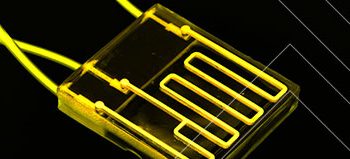Factors such as the growing public awareness about the therapeutic potential of stem cells; development of novel technologies for stem cell preservation, processing & storage; rising number of hematopoietic stem cell transplantations (HSCTs); and increasing investments in stem cell-based research are driving the growth of the market. However, the high operational costs associated with stem cell banking and stringent regulatory frameworks are expected to limit the growth of the stem cell banking market during the forecast period.
The global stem cell banking market is projected to reach USD 9.30 Billion by 2023 from 6.28 Billion in 2018, at a CAGR of 8.2%.
Global Leaders:
The major players in the market include Cord Blood Registry (CBR) Systems (US), Cordlife Group Limited (Singapore), Cryo-Cell International (US), ViaCord (US), Cryo-Save AG (Netherlands), LifeCell International (India), StemCyte (US), Global Cord Blood Corporation (China), Smart Cells International (UK), Vita34 AG (Germany), and CryoHoldco (Mexico); among others.
Download PDF Brochure@
https://www.marketsandmarkets.com/pdfdownloadNew.asp?id=220680183
Major Growth Strategies Adopted:
Analysis of the market developments between 2015 and 2018 reveals that several growth strategies such as service launches & upgrades; agreements, partnerships, & collaborations; and mergers & acquisitions were adopted by the market players to strengthen and competitive position in the global stem cell banking market. Among these business strategies, agreements, partnerships, & collaborations were the most widely adopted growth strategies by majority of market players worldwide.
Cord Blood Registry (CBR) Systems held the leading position in the global stem cell banking market in 2017. The company has a widespread presence and large customer base in the US. The company primarily focuses on advancing its umbilical cord preservation services through the adoption of inorganic growth strategies such as collaborations and partnerships. In 2017, the company collaborated with the New York Stem Cell Foundation (US) to develop induced pluripotent stem cells from umbilical cords. In addition to this, in 2015, the company entered into a strategic collaboration with Global Cord Blood Corporation (China) to integrate their methodologies for the collection, processing, and storage of umbilical cords and improve the overall stem cell banking service standards in the US and China.
Cordlife held the second position in the global stem cell banking market in 2017. The company is a leading player in the Asian stem cell banking market with its robust presence across eight countries and high-quality services. To sustain its leading position in the Asian region, the company mainly focuses on increasing its customer base through agreements. For instance, in 2017, the company entered into an agreement with IPS Trading and Service Joint Stock Company (Vietnam) to offer umbilical cord banking services and non-invasive metabolic newborn screening in Vietnam. Similarly, in 2016, the company collaborated with Bio Secure Company Limited (Myanmar) to offer umbilical cord banking services in Myanmar.
Request Sample Pages@
https://www.marketsandmarkets.com/requestsampleNew.asp?id=220680183
Geographical Growth Scenario:
North America is expected to dominate the stem cell banking market in 2019
Geographically, the market is segmented into North America, Europe, Asia Pacific, and the Rest of the World. North America is expected to account for the largest share in 2019. The expanding network of stem cell banking services across the region, ongoing approval of stem cell lines for disease treatment (especially for hematopoietic & autoimmune disorders), recent technological advancements in the field of stem cell collection and preservation techniques, and rising public-private investments for stem cell researches are driving the growth of the stem cell banking market in North America.


